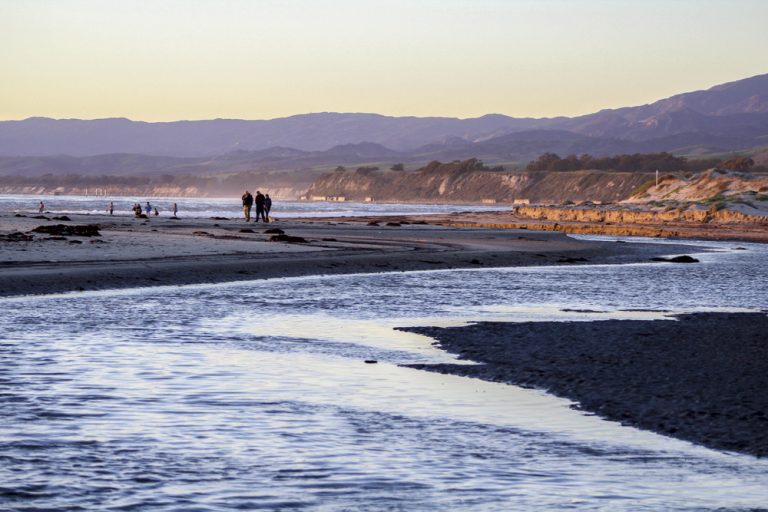
Tanner Walker
Last week the Devereux Slough opened up for the first time this winter season. Runners, beach combers, and bird watchers all noticed the new river running from the lagoon into the ocean.
Heavy and consistent rainfall in the slough’s watershed poured in enough water to burst through the natural sand embankment. Signs warning beach goers of the newly formed river mouth’s dangers were posted to discourage people from attempting to cross it.
The opening to the sea did more than create a hassle for beach combers and a temporary sand bar for surfers. It allowed almost a year’s worth of built up debris and contaminants to wash out and new salt water to come in, which can dramatically change the lagoon’s conditions.
Unlike most estuarine systems, the Devereux lagoon is almost always cut off from the ocean and not heavily influenced by tidal changes. When the mouth opens, water levels change dramatically and new species can be introduced to the lagoon. According to the 2008 study Effective Estuarine Management: A Case Study of a California Estuary and its Ecological and Political Characteristics, an open mouth that provided a tidal connection allowed the endangered tidewater goby to re-enter the lagoon for the first time since 1968.
Heavy winter rains also have surprising and long lasting effects on salinity levels, compounded by human activity. As a direct result of human development, the slough is now much smaller than it was a few hundred years ago. Agriculture in the 1800 and 1900s caused large amounts of erosion and landslides that filled much of the slough with sediment. In the 1920s, the Campbell family built a road to their property, bisecting the slough into two fingers and slowing water movement. Finally, in the 1960s, Ocean Meadows golf course was created by filling in part of the wetlands.
The tiny remaining body of water is subject to greater fluctuations in salinity and water levels than larger lagoons. An open mouth in the winter allows for drainage, leaving a smaller, saltier body of water until the next rain. In fact, the Devereux slough’s salinity can rise to over 70 parts per thousand, twice the normal level of salinity in the ocean.
Because of its temperamental relationship with the ocean, the Devereux slough is more dynamic than most estuarine systems, including its closest neighbor, the Goleta Slough.
Located on the other side of Isla Vista and the UCSB campus, the Goleta Slough is the ghostly living reminder of the historic Goleta Bay. Before agriculture and the construction of a WWII airfield that eventually turned into the Goleta airport, the bay’s waters stretched past highway 101.
In fact, the bay was large enough that ships could sail in during winter or summer high tides. The majority of the boats were spanish schooners, or Goletas. An abundance of these ships, as well as a few wrecks in the bay, ultimately lead to the town of Goleta taking its name from them. Now, the slough is much too small to sail through after experiencing the same degradation as Devereux.
Despite sharing the same man-made demise, the Goleta Slough and Devereux Slough offer distinctly different habitats. Devereux is home to almost 300 species of birds, and “with its sandy beach, sand dunes, and adjacent estuary mouth is one of a few choice west coast locations where the snowy plovers can still breed and thrive. With public education and symbolic fences the plovers…made a comeback,” according to the UCSB Natural Reserve System.
The Goleta Slough, on the other hand, has a larger and more consistent opening to the ocean which provides more habitat for larger, more salt tolerant fish and shore birds.











